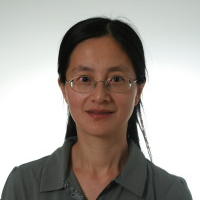Featured Papers in the Section Internet of Things
A special issue of Future Internet (ISSN 1999-5903). This special issue belongs to the section "Internet of Things".
Deadline for manuscript submissions: 15 September 2024 | Viewed by 10430
Special Issue Editor
Interests: wireless communications and networking; mobile cloud computing; Internet of Things; network protocol design and modeling; performance analysis and optimization
Special Issue Information
Dear Colleagues,
The Internet of Things (IoT) is an exciting research area due to the innovative advances connected devices and systems bring to society. This trend appears quite fitting in the context of the increasing relevance of the wide systemic and interdisciplinary approach of future internet.
Therefore, Future Internet is pleased to announce this new, topical Special Issue, in which we will publish contributed and invited papers referring to pre-selected basic and/or hot topics related to the Internet of Things (IoT).
This Special Issue is particularly soliciting conceptual, theoretical, and experimental contributions, discussing challenges, the state of the art, and solutions to a set of currently unresolved key questions including, but not limited to the following:
- AI-empowered IoT;
- Cloud computing;
- Internet of Things
- Wireless communications and networking;
- Mobile cloud computing;
- Network protocol design and modeling;
- Performance analysis and optimization;
- Industry 4.0;
- Blockchain for Cloud computing and IoT;
- Network protocols, network design, and architectures;
- Complex networks;
- Ad hoc and sensor networks;
- Software-defined networks.
Dr. Ping Wang
Guest Editor
Manuscript Submission Information
Manuscripts should be submitted online at www.mdpi.com by registering and logging in to this website. Once you are registered, click here to go to the submission form. Manuscripts can be submitted until the deadline. All submissions that pass pre-check are peer-reviewed. Accepted papers will be published continuously in the journal (as soon as accepted) and will be listed together on the special issue website. Research articles, review articles as well as short communications are invited. For planned papers, a title and short abstract (about 100 words) can be sent to the Editorial Office for announcement on this website.
Submitted manuscripts should not have been published previously, nor be under consideration for publication elsewhere (except conference proceedings papers). All manuscripts are thoroughly refereed through a single-blind peer-review process. A guide for authors and other relevant information for submission of manuscripts is available on the Instructions for Authors page. Future Internet is an international peer-reviewed open access monthly journal published by MDPI.
Please visit the Instructions for Authors page before submitting a manuscript. The Article Processing Charge (APC) for publication in this open access journal is 1600 CHF (Swiss Francs). Submitted papers should be well formatted and use good English. Authors may use MDPI's English editing service prior to publication or during author revisions.





